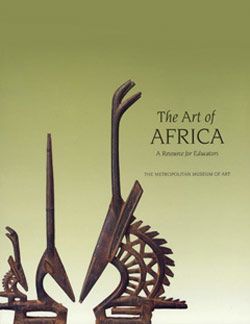Buffalo figure
Fon silver works such as this buffalo served as objects of power and prestige owned by a ruler of the Fon kingdom of Dahomey in the present-day Republic of Benin. In the eighteenth and nineteenth centuries, the kingdom of Dahomey prospered as a major center of the international slave trade. The Fon kings were important art patrons who engaged court artists to create items that enhanced their status. During annual festivities called huetantu, these lavish sculptures and textiles were paraded through the capital to celebrate the kingdom's wealth and military might.
The almost constant warfare that was required to maintain a steady supply of captured slaves resulted in a culture of militarism centered on the person of the king. According to some sources, such precious, metal-covered objects, were not simply prestige objects but might be filled with supernaturally potent materials to protect the monarch and aid him in his military exploits. During times of war, mystically fortified sculptures, called bocio, were placed in palace shrines where they were the focus of prayers and sacrifices to Gu, the deity associated with war.
During these times of crisis and before the coronation of a new ruler, the Fon leadership might consult fa, the regional system of divination. The buffalo is one of fa's 256 symbols. It is associated with a specific ruler to help provide insights into the events that would mark his life. A ruler was so intimately allied with his emblem that it was believed he could assume that animal's form. Proverbs, poems, and songs are used to interpret each sign and corresponding visual arts. Both the buffalo and the elephant are associated with the Dahomey ruler King Guezo (r. 1818–58). They are believed to evoke strength, royal legacy, and enduring memory as exemplified in the following proverbs: "There where the elephant passes in the forest, one knows" and "The animal steps on the ground, but the elephants step down with strength." Through his relationship to the elephant and buffalo, Guezo is known as a ruler who left an indelible impression on its own kingdom and those of their adversaries.
This exquisite example, comprised of a wooden core covered in hammered silver sheeting, was created by members of the royal guild at the height of the kingdom's influence. Few such silver Fon works were produced and the Fon emphasis on uniqueness, innovation, and originality increases their rarity. The excellent workmanship has resulted in an artifact of surprising spontaneity and playfulness. The artist has taken a fresh approach to the balance of naturalism and stylization. He has also enriched the textural interest of the piece through the integration of multiple metalworking techniques, incorporating cast-iron elements as well as silver.
This image cannot be enlarged, viewed at full screen, or downloaded.


